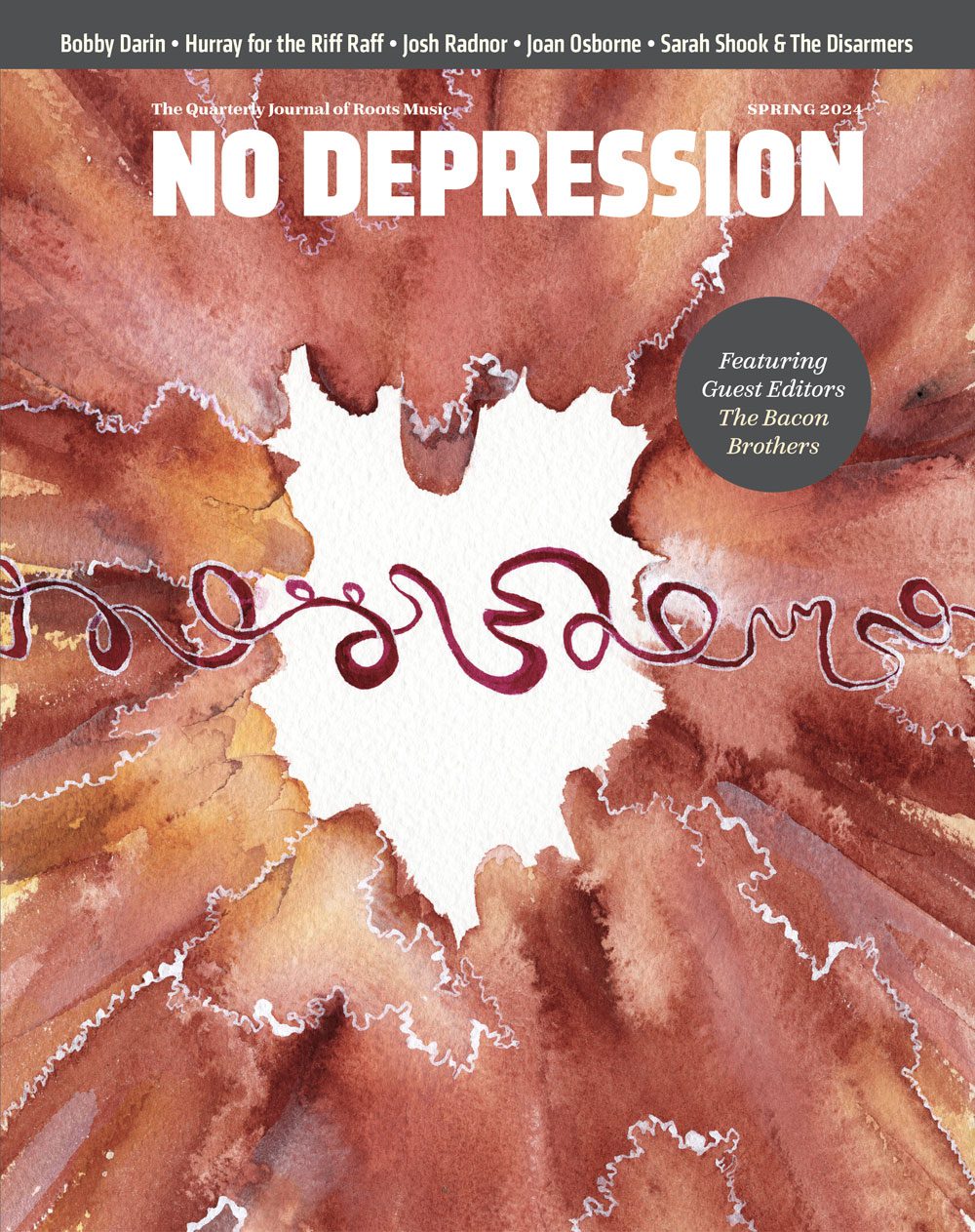Hello Stranger from Issue #5
In the silence we heard only whispers. Not exactly the response I’d imagined when we chose to put a previously unpublished photograph of two blackface comedians and Hank Williams on the cover of our last issue.
In the end, we received just one letter (and only a week ago, at that), along with muffled complaints from a few outlets. And I have no idea what that means.
As Jim Ridley noted in the most recent Journal of Country Music, we are latecomers to country music. There are good sociological reasons, I think, why our numbers will grow. (The short version: The underground rock scene of the ’80s taught many of us not to be dependent on obvious sources for our music; the alternative rock boom of the ’90s will inevitably force the curious to seek out new sounds elsewhere. And it is no longer possible for those of us who remember its first flowering to believe in the passion of punk rock. Anyway…)
Since we arrive to this music from outside of country’s traditional fan base, I suspect its resonances, meanings and subtexts strike us differently. And that we take different pleasures from the music.
One thing that is unmistakable in even a cursory glance at the landscape of country music is its pale complexion.
Well, what are we to do with that?
Talk about it, for starters.
More than a few parts of American history aren’t very pretty. The people who originally lived on this continent have largely come to a bad and ugly end. Ancestors of the slaves imported to work that stolen land haven’t fared much better. And, from my vantage point temporarily installed in Southern California, it is frightening to see the emergence of a brown-skinned servant class.
Ignoring that history does not make it go away.
–GRANT ALDEN
“This lawn mower, purchased from Tweedy and Popp in the Depression era (note the NRA — National Recovery Act emblem), gave its owners over 50 years of service. A quality mower, properly maintained and serviced, may indeed outlive its owner!”
A handwritten sign bearing the above anecdote appears next to an old-style (i.e., non-gas-guzzling) grass-cutter in the window of Tweedy & Popp, a hardware store on 45th Street in the heart of the Seattle neighborhood of Wallingford, just a few blocks down the street from No Depression’s “headquarters” (to the extent that such a thing exists). Wilco leader Jeff Tweedy, in town for a gig with Golden Smog back in June, was kind enough to allow himself to be dragged off to a photo shoot in front of his namesake store for the photos that grace our cover and page 48.
It seemed a fitting coincidence that the sign in the window reflected a historical perspective that we also aspire to bring to this magazine. Whether or not No Depression continues to grow and prosper on the newsstands, whether or not it helps the artists we’ve endeavored to expose to a wider audience, whether or not it makes the music-industry powers-that-be pay more attention to what’s going on in this little corner of the underground — none of that will matter in 50 years.
But somewhere, stocked away on the shelves of the Country Music Foundation’s library in Nashville, or in the nether reaches of some music magazine collector’s basement, or at some slashed-dotted-hyphenated address on the Solar System Wide Web, will be copies of No Depression issues #1, 2, 3, 4, 5, and who knows just how many more to come. In the long run, it’s not about what’s happening at any given moment. It’s about history, and the record of it that we leave behind.
And a quality magazine, properly maintained and serviced, may indeed outlive its owners.
–PETER BLACKSTOCK



